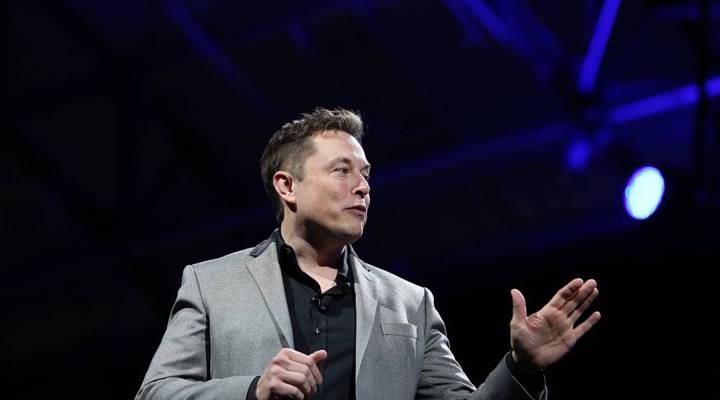
Boring tunnel set to open in L.A. area

The Boring Company is getting ready to open its first underground tunnel in the Los Angeles area Tuesday… maybe. CEO Elon Musk, who has occasionally overpromised, has already bumped the date by a week. He calls the new tunnel an attempt to solve the problem of “soul-destroying traffic.” It’s a 2-mile prototype of the so-called “loop” system he envisions for whisking people and cars under the city on high-speed electric platforms all over Los Angeles, as well as in Chicago and Washington, D.C.
While engineering and transportation experts are not convinced Musk’s tunnel vision will be as revolutionary as promised, the prospect of a high-tech solution to urban congestion has a lot of people excited, like filmmaker Brandon Ruckdashel. He sees Musk as a visionary innovator who found success against all odds in the electric car and private space industries. So when he heard Musk was throwing his energy into busting gridlock, he got pretty excited.
“I think it’s great. It’s a different way of looking at things,” he said.
Ruckdashel bought half a dozen hats with the Boring Company logo on them and he’s scheming to make a trip from New York to Los Angeles to try out the tunnel. “Heck yeah! I’m not scared,” he exclaimed.
The idea to move people and cars underground is hardly new, it’s just expensive. Musk says he can make the process much cheaper with smaller tunnels and faster boring machines. That may be possible, said James Moore, a professor of civil engineering at the University of Southern California. But he doesn’t think technical improvements will address the bigger challenges facing a big urban infrastructure project of this type.
“The questions here that are most relevant are institutional. They don’t have much to do with technology,” he said. California requires an in-depth environmental review that can take years and cost millions, and the process can get bogged down by lawsuits. Musk has already gotten a taste of that: He canceled another proposed test tunnel on the Westside of Los Angeles after local residents sued.
Then there’s the problem of getting property rights: Landowners have to give permission or be forced through eminent domain to allow tunneling beneath them. Even if the Boring Company clears those hurdles, there’s no guarantee tunnels will provide the traffic relief Musk has promised, according to Juan Matute, deputy director of UCLA’s Institute of Transportation Studies.
“It’s hard to pinpoint an example of an engineering solution that has done something to actually reduce traffic congestion,” he said, pointing out innovations from streetcars to freeways have done little to reduce urban gridlock, because the easier you make it to travel through a city, the more people will do it. Matute said it’s a well-studied phenomenon called induced demand. Basically, “if you build it, they will come.”
That won’t apply underground, Musk has argued, because there’s no limit on space so tunnels could be a hundred lanes wide. But that seems to negate the whole idea of smaller, cheaper tunnels, requiring a massive investment that could be challenging for the company to recoup.
There’s a lot happening in the world. Through it all, Marketplace is here for you.
You rely on Marketplace to break down the world’s events and tell you how it affects you in a fact-based, approachable way. We rely on your financial support to keep making that possible.
Your donation today powers the independent journalism that you rely on. For just $5/month, you can help sustain Marketplace so we can keep reporting on the things that matter to you.












